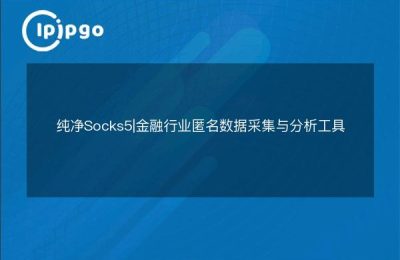
Building an exclusive IP node to access TikTok may sound a bit complicated, but you can easily achieve it by following the steps. In this article, we will detail a tutorial on how to implement a sole IP node to access TikTok using only a proxy IP.
preliminary
Here are a few things you need to have on hand before you start:
- A cloud server that supports proxy servers (recommended for the US or other regions that support TikTok access)
- A dedicated IP address (usually assigned by the cloud service provider)
- SSH access to the server
- Basic Linux operating system knowledge
Step 1: Purchase and Configure Cloud Servers
First, you need to choose a cloud service provider and purchase a cloud server. Common service providers include AWS, Google Cloud, DigitalOcean, etc. Choose a region that supports TikTok access, such as the United States.
After purchasing the server, get the IP address and SSH access to the server. You can do this through the control panel provided by the service provider.
Step 2: Connect to the Cloud Server
Use SSH to connect to your cloud server. You can connect in Terminal (Mac/Linux) or using PuTTY (Windows). Below is an example of a connection command:
ssh root@your-server-ip
After entering your password, you will be successfully logged in to the server.
Step 3: Install and Configure Squid Proxy Server
Squid is a commonly used proxy server software, here are the steps to install and configure Squid:
Update the system package:
apt update && apt upgrade -y
Install Squid:
apt install squid -y
Configure Squid:
Edit Squid's configuration file:
nano /etc/squid/squid.conf
Find the following in the configuration file and modify it:
http_port 3128
Add the following to restrict access:
acl localnet src your-local-network
http_access allow localnet
http_access deny all
For example, if you only want to allow specific IP addresses to access the proxy server, you can set it up like this:
acl localnet src 192.168.1.100
http_access allow localnet
http_access deny all
Save and exit the editor.
Restart the Squid service for the configuration to take effect:
systemctl restart squid
Check the status of the Squid service:
systemctl status squid
Ensure that the service has started successfully.
Step 4: Configure the firewall
To ensure that your server can accept external connections, you need to configure your firewall to open up ports for Squid. Below is an example:
ufw allow 3128/tcp
ufw enable
Step 5: Configure the local device
Now, you need to configure the proxy settings on your local device to access TikTok through a dedicated IP node.Here are the configuration steps:
- Open your network settings:
- Find the Proxy Settings option:
- Enter your proxy server information:
- Proxy server address: IP address of your cloud server
- Proxy server port: 3128
- Save the configuration and apply it.
Step 6: Verify Connection
Once the configuration is complete, you can try to open TikTok and see if you can access it smoothly. If all goes well, you should be able to use TikTok smoothly through a dedicated IP node.
summarize
With the above steps, you can successfully build an exclusive IP node to access TikTok. although the process may seem a bit complicated, but if you follow the steps, I believe you will be able to do it easily.
I hope this tutorial has helped you to get more comfortable with TikTok. If you encounter any problems during the setup process, feel free to leave a comment and I'll do my best to help you out.








